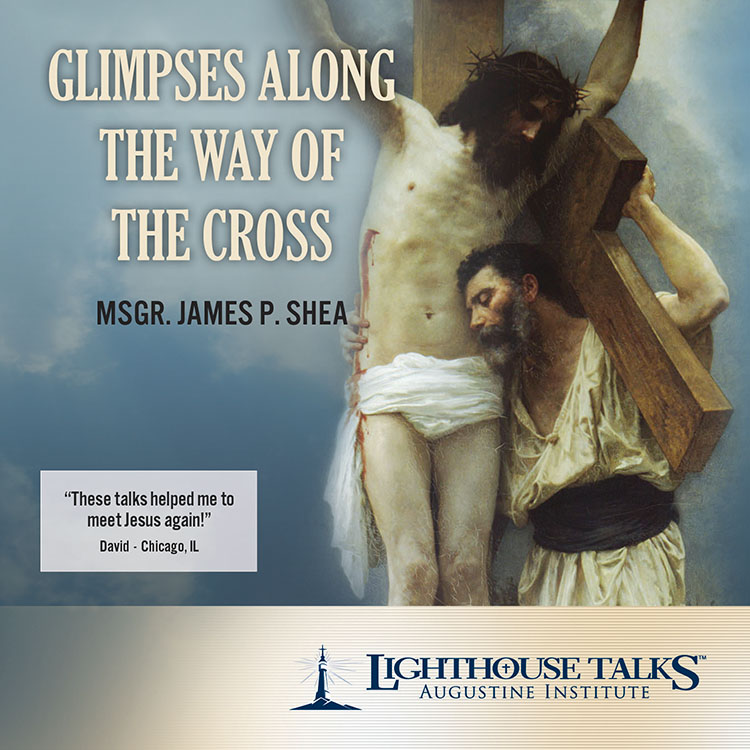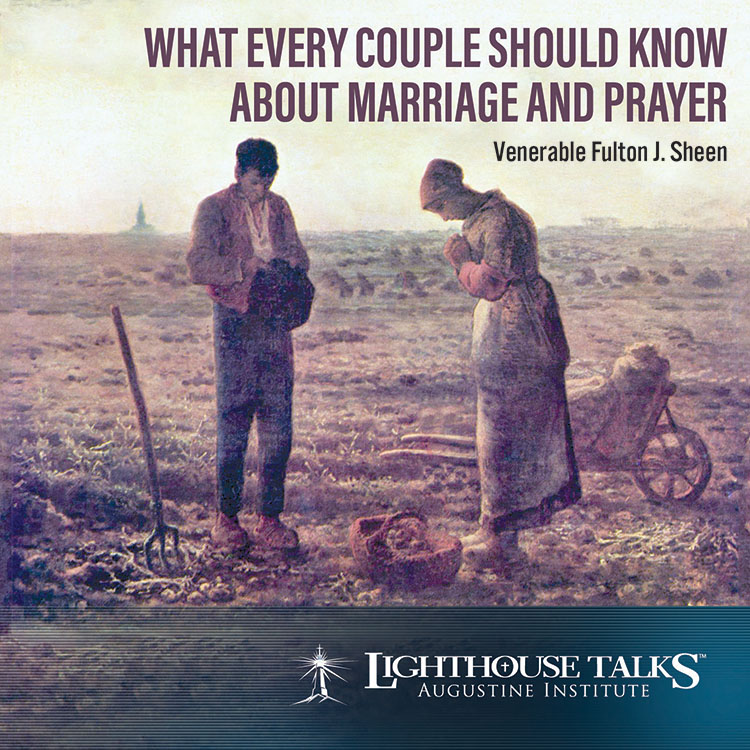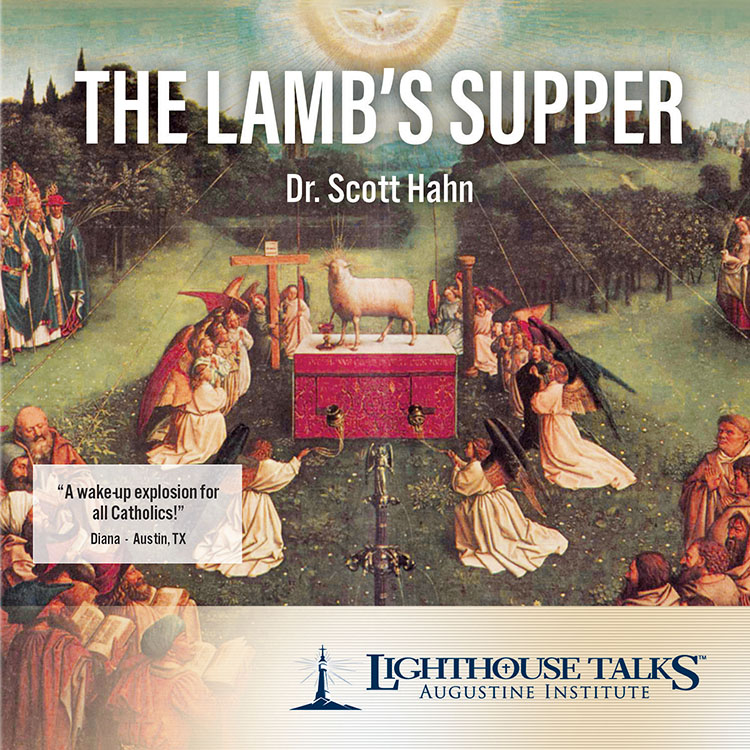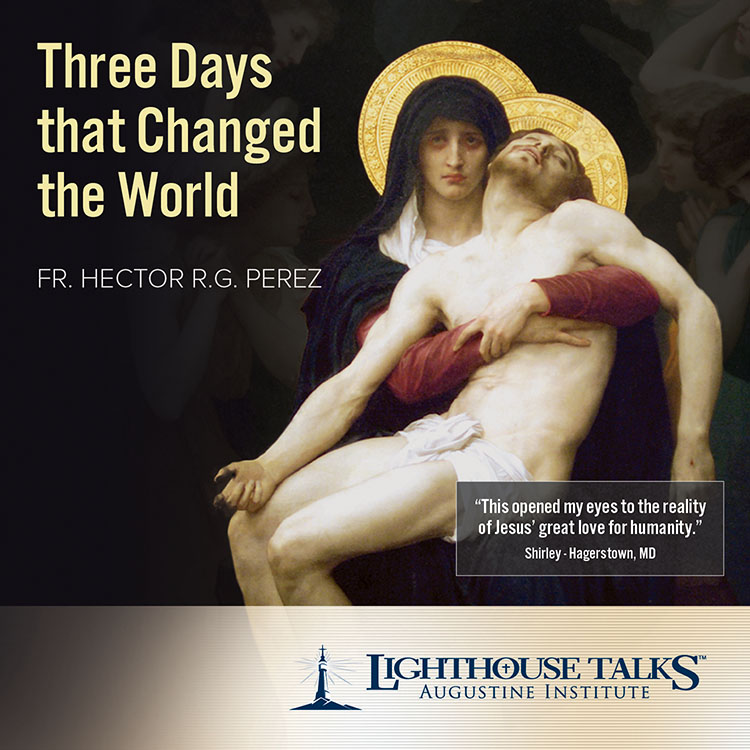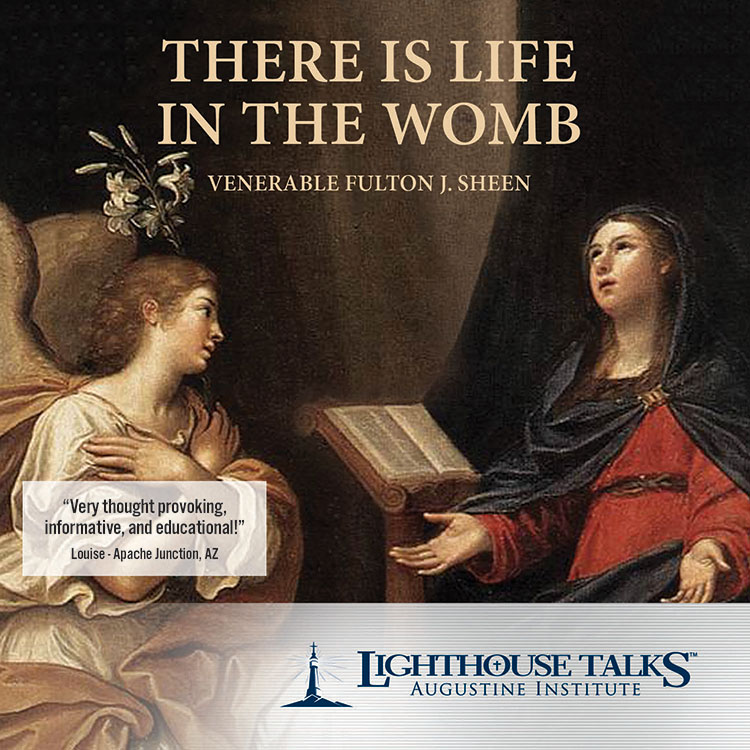“The time has come to move beyond Creation Science”, announces Protestant pastor and author Tim Martin in Beyond Creation Science. “How many Christian conservatives would have looked at The Genesis Flood [by John Whitcomb and Henry Morris] a little more carefully”, he writes, “if they were aware up front of its Adventist roots?”
And Vatican astronomer Guy Consolmagno (S.J.), quoted as saying that ‘creationism is a kind of paganism’ – though he denies having said that exactly, but something akin to it – has answered this question:
The National Academy of Sciences states that creationism doesn’t belong in the classroom. Do you agree?,
with
That’s what the Catholic Church has been saying all along. After the law was passed in Kansas [forbidding teaching of evolution in schools], the only place you could learn about evolution was in a Catholic school. Creationism isn’t science; it’s theology. And in fact most religious people aren’t creationists. That’s an incredibly naïve understanding of religion.
Consolmagno’s comments have prompted Michael Fishwick, a writer for the Kolbe Center for the Study of Creation – a Catholic lay apostolate promoting creationism – to entitle a response: “Kolbe Center for the Study of Paganism!?”
And, to the question:
What is ‘creationism’anyway?
Consolmagno replies:
There are different flavors to it. In the U.S. context, if it’s “Do you believe God created the universe?” – I think most Western believers would say yes. But creationists have a creed that the Bible is literally true; Genesis is a blow-by-blow description of what God did at the beginning. That’s not how Genesis was written; it’s a very flawed understanding of how to read the Bible.
It’s also kind of peculiar, because there are three different creation stories [sic?] in the Bible, so which is true?
Even more strongly critical is Tim Martin again (who used to espouse creationism), when he calls Creation Science “a right-wing form of modernism”:
We live in a world dominated by materialism and scientism. The reduction of every aspect of life to“science” has corrupted the soul of Western Civilization. This is one key to understanding the related popularity of both futurism and Creation Science. They are both perfectly compatible with the scientistic spirit of the modern age. In fact, dispensational futurism, at least, is impossible apart from it. Christians aid this scientistic syncretism through Creation Science methods of reading Scripture. They do it by reducing even the language of the Bible to the“scientific.”[1]Viewed in this light it is not difficult to see that Creation Science ideology is a right-wing form of modernism. Conrad Hyers puts it this way:
Even if evolution is only a scientific theory of interpretation posing as scientific fact, as the [young-earth] creationists argue, [young-earth] creationism is only a religious theory of biblical interpretation posing as biblical fact. To add to the problem, it is a religious theory of biblical interpretation which is heavily influenced by modern scientific, historical, and technological concerns. It is, therefore, essentially modernistic even though claiming to be truly conservative.[2]
Catholics (those tending to be of the conservative variety) who have followed Creationism over the years would be well aware that mainstream Catholic scholars have shown virtually no interest whatsoever in its teachings, and that official Catholic documents never seem to support Creation Science.
Why is this so?
Surely Creation Science, teaching a belief in God the Creator of all things, and vehemently defending the inerrancy of the Sacred Scriptures, ought to be warmly welcomed by the Church as an invaluable ally.
On the other hand, the God-fearing are not always right in their estimations, no matter how sincere, and they may need to be corrected. Consider Our Lord’s constant corrections of good people when using the phrase, “You have heard it said … but I tell you”. Some traditions, even those of very long standing, need correcting. The conservative friends of Job had to be awoken from their dogmatic slumber and traditional views about the Divine and retribution. So was the case with the Apostles in regard to the blind man (John 9:3).
In more recent times, much of the misalignment of ancient history with the Bible is due to well-intentioned early archaeologists and historians who had tried to co-ordinate the era of Abraham with the civilisation of Ur famously being excavated by Sir Leonard Woolley. This was on the basis of biblical testimonies (e.g. Genesis 11:31; 15:7) that Abram (Abraham) had been called by God out of Ur of the Chaldeans (generally associated with the famous city of Ur in southern Mesopotamia). Thus they applied to the famous Ur III civilisation a date of commencement of c. 2000 BC, when Abraham lived. This was a disastrous presumption. And so was the choice by François Champollion of the Libyan pharaoh Shoshenq I as the biblical pharaoh “Shishak” who sacked king Solomon’s temple (1 Kings 14:25; 2 Chronicles 12:1-12). Despite the name similarity, this Libyan pharaoh never attacked Jerusalem (as even those who support this identification will admit). This supposed biblically-based pillar of Egyptian history, which stands immovable to this day, has been a disaster for biblical history.
So may it be, likewise, that Creation Science, though a generally sincere and well-intentioned effort to uphold orthodoxy, truth and religion, might have quite missed the mark, leading to chaos, and hence needs to be corrected? That is the view that will be taken here, that it is now time to move beyond Creation Science, as author Tim Martin has said. That does not mean, however, that we accept the criticisms of Brother Guy Consolmagno, who may be associated with Teilhardian-inclined evolutionary-minded colleagues, nor that we espouse evolution. Creation Science has turned this upside down. And, on this very last point, we should like to mention a fascinating article produced by the Kolbe Center and Robert Sungenis, which, if correct, could have explosive consequences for Catholic thinking. The article is called:
“Evolution More than a Hypothesis” Never Said By Pope John Paul II
This can be read at: http://www.catholicintl.com/index.php/catholic/scandals/993-qevolution-more-than-a-hypothesisq-never-said-by-pope-john-paul-iiand we urge you to read it!
Dismantling the ‘scientific’ pillars of Creationism
Assuredly, Creation Science is built largely upon the assumption of a global Flood and its geology, but also to some extent upon a ‘science’ of a Six Days of Creation. As we shall see, the methodology is artificial because the approach is entirely ‘Procrustean’, forcing all the data to conform to the a priori concept. It is exactly like the approach to reality of the highly theoretical physical scientists, many of whom are not believers.
The concept of a global Flood has arisen from the universal language of the Flood narratives as read in translation, without a proper appreciation of the original language, of antiquity, of the Middle East, or of ancient scribal methods.
Geologist professor Carol A. Hill tells of into what sort of a scientific bind the global Flood model places its proponents when she writes (“The Noachian Flood: Universal or Local?” http://www.csun.edu/~vcgeo005/Carol%201.pdf.):
Biblical Evidence
One of the basic tenants of many biblical literalists (creation scientists) is that Noah’s Flood was a universal phenomenon—that is, flood waters covered the entire planet Earth up to at least the height of Mount Ararat, which is ~17,000 feet (5000 m) in elevation. Corollary to this view is the position held by flood geologists—that most of the Earth’s sedimentary rocks and fossils were deposited during the deluge of Noah as described in Genesis 6–8. To explain this universal flood, flood geologists usually invoke the canopy theory, which hypothesizes that water was held in an immense atmospheric canopy and subterranean deep between the time of Creation and Noah’s Flood. Then, at the time of the Flood, both of these water sources were suddenly released in a deluge of gigantic, Earth-covering proportions. Along with this catastrophic hydrologic activity, there was a major geologic change in the crust of the Earth: modern mountain ranges rose, sea bottoms split open, and continents drifted apart and canyons were cut with amazing speed. All animals and plants died and became encased in flood sediments, and then these fossil-bearing sediments became compacted into sedimentary rock. There are modifications of the canopy scheme, such as the “ice-lens,” “greenhouse,” “invisible,” and “visible”canopies … but essentially the canopy theory claims that waters released during Noah’s Flood caused all (or most) of the sedimentary and geomorphic features we see today on planet Earth.
[End of quote]
Now, just because we are going to argue that Creation Science is not genuine science does not mean that we do not appreciate the great work done by its many contributors over the years, nor do we reject all of its conclusions. It has turned evolutionary geology on its head. Just as we do not accept many of the conclusions of conventional science, even though we sometimes find that scientists have better interpreted biblical hermeneutics, re Genesis, than have some of the Christians. In the past we have written in regard to this anomalous situation:
… there sometimes occurs the ironical – even humorous – situation whereby agnostic scientists will occasionally call for a more enlightened exegetical approach to Genesis than do the upholders of the biblical tradition; whereas the latter will at times arrive at a more accurate interpretation of the scientific data than do their scientific opponents.
Professor Hill now tells of the scientific bind for those who uphold a global Flood:
Scientific Evidence
Geologic Evidence
No geologic evidence whatsoever exists for a universal flood, flood geology, or the canopy theory. Modern geologists, hydrologists, paleontologists, and geophysicists know exactly how the different types of sedimentary rock form, how fossils form and what they represent, and how fast the continents are moving apart (their rates can be measured by satellite). They also know how flood deposits form and the geomorphic consequences of flooding.….
Flood Geology. In addition to a lack of any real geological evidence for flood geology,
there are also no biblical verses that support this hypothesis. The whole construct of flood geology is based on the original assumption that the Noachian Flood was universal and covered the whole Earth. Since the Flood was supposedly worldwide, then there must be evidence in the geologic record left by it. Since the only massive sediments on Earth are those tied up in sedimentary rocks, and because these rocks often contain fossils, this must be the “all flesh” (Gen. 7:21) record left by Noah’s Flood. And since sedimentary rock can be found on some of the highest peaks in the world (including Everest, the highest), then these mountains must have formed during and after the Flood. The “leaps of logic” build one on top of another until finally, as the result of this cataclysmic event, almost all of the geomorphic and tectonic features present on the planet Earth (e.g., canyons, caves, mountains, continents) are attributed by flood geologists to the Noachian Flood.
Does the Bible actually say anything about mountains rising during the Flood? No, but it does say that mountains and hills were in place before the Flood (Gen. 7:19, 8:4). Does the Bible say anything about sedimentary rock, fossils, or drifting continents? Not
one word. All of these things are read into the Bible from a centuries-past interpretation of it. Most important from a literalist perspective, it can be shown from the Bible (Gen. 2:10–14; Gen. 6:14) that the four rivers of Eden flowed over, and cut into, sedimentary rock strata; that the pre-Flood landscape was a modern one (similar to the present-day landscape; that is, overlying sedimentary rock); and that the bitumen (pitch) used by Noah to caulk the ark was derived from hydrocarbon-rich sedimentary rock. …. Therefore, sedimentary rock must have existed before the Flood.
The Bible itself never claims that all of the sedimentary rock on Earth formed at the time of the Noachian Flood— only flood geologists make this claim.
[End of quote]
We, like Tim Martin, had once favoured the notion of a global Flood but then (fairly recently) dropped the idea. Our own point of departure from this model occurred when we came to search for the location of Paradise and realised that the ancient world of Adam and Eve, the world of Genesis 2, was structured around the four rivers Pishon, Gihon, Tigris and Euphrates; rivers that editor Moses connected with real locations in his own day (e.g. Kush and Ashur) (and still active more than a millennium later, in Sirach’s day, Ecclesiasticus 24:25-27). In other words, there was a continuity between the antediluvian and post-diluvian worlds, contrary to global floodists, who posit a Flood so massive that no trace whatsoever of the former world could have remained.
Along with this was an archaeology in Mesopotamia that revealed a Cain-ite world, destroyed by a great flood, and then a recommencement of that world. For a full explanation of all this, see our
THE CHRONOLOGY OF THE ALPHA AND THE OMEGA
The biblical evidence for the basic ‘shell’, at least, of the Adamic world still being with us even today has devastating effects for global floodism. This, so well explained by Carol Hill (though we reject her location for Eden), effectively sounds the death knell to creationist geology:
The Garden of Eden: A Modern Landscape
In this paper, I try to apply the findings of modern geology to Gen. 2:10-14. I deduce from the evidence that the four rivers of Eden–the Pishon, the Gihon, the Hiddekel [Tigris], and the Euphrates–were real rivers which existed on a modern landscape before Noah’s flood. …. Oil-drilling in southern Iraq confirms that six miles of sedimentary rock exist below the biblical site for the Garden of Eden. This same sedimentary rock is the source of bitumen at Hit, a site which may have supplied Noah with pitch for constructing the ark. The question is asked: How could pre-flood Eden have been located over six miles of sedimentary rock supposedly formed during Noah’s flood?
….
Implications for Flood Geology
So far in this paper, I have argued that the Bible locates the Garden of Eden at the confluence of the four rivers of ancient Mesopotamia. The Bible correctly identifies the Pishon River as draining the land of Havilah (Arabia), from whence came gold, bdellium, and onyx stone. The Bible also correctly identifies the Euphrates and Tigris, both of which are modern rivers which drain approximately the same area of Mesopotamia as they did in ancient times. The Gihon …. not positively identified [AMAIC: we do not accept Hill’s location of this river in Iran, it was clearly in Ethiopia, Kush]is probably the Karun (and/or Karkheh), which “encompasses” (winds around) the whole land of Cush (western Iran). Thus, the Bible locates the Garden of Eden …. on a modern landscape similar to that which exists … today.
Six Miles of Sedimentary Rock Below Eden
This interpretation of the Garden of Eden as existing on a modern landscape presents a major conflict between what the Bible says and what flood geologists say.67 The reason is this: there are six miles of sedimentary rock beneath the Garden of Eden/Persian Gulf. How could Eden, which existed in pre-flood times, be located oversix miles of sedimentary rock supposedly deposited during Noah’s flood? What flood geologists are implying is that the Garden of Eden existed on a Precambrian crystalline basement and then Noah’s flood came and covered up the Garden of Eden with six miles of sedimentary rock. But this is not what the Bible says. It says that Eden was located where the four rivers confluenced on a modern landscape. It says that the Garden of Eden was located on top ofsix miles of sedimentary rock, and thus this sedimentary rock must have existed in pre-flood times.
[The Bible] says that the Garden of Eden was located on top of six miles
of sedimentary rock, and thus this sedimentary rock must have existed
in pre-flood times.
of sedimentary rock, and thus this sedimentary rock must have existed
in pre-flood times.
The fact that six miles of sedimentary rock exist beneath the Persian Gulf area is well known by geologists, since this area has been extensively drilled for oil, down to the Precambrian basement. The fact that the Persian Gulf is located in an area of oil recovery is equally as evident to the layperson who, in 1991, witnessed on television the numerous oil fires set off in Kuwait during the Gulf War. The six miles of sedimentary rock below the Garden of Eden area include Tertiary, Cretaceous, Jurassic, Triassic, and Paleozoic rock up to a depth of about 32,000 feet before the Precambrian basement is encountered.68
….
[End of quote]
Whilst we would definitely agree with Hill and Martin that the biblical Flood was local rather than global, our own view, unlike theirs, is that it was not confined just to the region of Mesopotamia, where Hill has the confluence of the four Genesis rivers (in the Persian Gulf), but that it extended right through at least the Fertile Crescent, from Mesopotamia, through Palestine, to Egypt/Ethiopia– where we believe the Gihon river ran. According to Hill, this could not have been the case, because the Flood did not reach even unto Jericho (let alone Egypt and Ethiopia). Thus she writes (The Noachian Flood):
Archaeological Evidence
There is also no archaeological evidence for a universal flood. No flood deposits correlative with those in Mesopotamia have been found in Egypt, Syria, or Palestine, let alone in other parts of the world more distant from the Middle East. Archaeological mounds in Syria and Palestine (such as Jericho), which exhibit fairly continuous occupation since at least 4500 BC, show no signs of a great flood. ….
That the Flood did not extend even to the land of Israel is alluded to in Ezek. 22:24: “a land [Israel] … nor rained upon in the day of indignation [day of God’s judgment by the Flood].” ….
[End of quote]
How Local Was the Local Flood?
Is she right here? And, if the biblical Flood was not global, then how far did it extend?
Professor Hill has optimistically made Ezekiel 22:24 above indicate that the Noachic Flood did not extend even to the land of Israel. Whether it did or not, the prophet Ezekiel in this passage is saying nothing of the sort. Far from the prophet’s words being meant to be a blessing, insofar as Israel was saved from a catastrophe, Ezekiel is foretelling (like Amos and others) that the blessing of rain will be withheld from Israel “in the day of indignation”,because of its sin; this being a terrible blow to an agricultural people.
Now it is our conviction that the Flood extended right across the entire Fertile Crescent, the world of the four rivers of Genesis 2. This is the only world that the Bible has given us up to Genesis 6-8, and so it must be “the world that then was” of St. Peter (2 Peter 3:6), that was destroyed by the Flood. So our local model is far vaster than are the typical local models. How else to explain that Jerusalem was once under the ocean? (“Diggings” (December 1994, Vol. 10, No. 12), “Why Hezekiah’s Tunnel Has the Bends” (p.5):
….
A geologist may have the answer … an Israeli geologist, Dan Gill, has done some research on the matter and has come up with some very plausible explanations.
A geologist may have the answer … an Israeli geologist, Dan Gill, has done some research on the matter and has come up with some very plausible explanations.
Dan identifies two types of rock in the tunnel area — limestone and dolomite. The former is fairly soft and porous, the latter comparatively hard. It is rather interesting that this limestone consists of about 30% fragments of fossil shells and some coral, which means that Jerusalem, which is now about 700 metres above sea level, must have been beneath the ocean at some time in the past.
[End of quote]
And so apparently was the entire Giza plateau in Egypt once under Flood:
Report from Mr Sherif El Morsi
Preface
…. for the last 20 years now I have also been collecting evidence of sea erosion due to deep water saturation on the Giza plateau. My own theory (already published in France in 2007) is that the last Great Flood … came up the Giza plateau, and that the Ancient Egyptians with their incomparable skills adapted the plateau from the beginning in order to protect their population and their science beneath it.…
This is not surprising when one considers the enormity in size of the ancient Nile (Ur Nil), as told by C. Pellegrino (Return to Sodom and Gomorrah, Bard, 1998, p. 47):
Under the Nile itself are remnants of a deep valley to rival the Grand Canyon. River silts began covering it up as soon as the Gibraltar dam broke open and the Atlantic spilled in, but oil geologists drilling through thousands of feet of mud have located the solid bedrock of the Nile Canyon’s floor. It lies nearly two miles beneath the city of Cairo.
For a brief time, for perhaps two or three thousand years [sic] …the [ancient] Nile poured over a cliff forty times higher than Niagara, but within a half million years [sic], at a rate of inches per day, it had chewed back the bare limestone, slashing the Earth from Cairo to Aswan. The river ran east of Karnak in those days; the slash bypassed Karnak’s limestone fields, left them intact for stonecutting beings, who were then only a distant potential in dryopithecine descent.
[End of quote]
Pellegrino’s reference to “the Gibraltar dam [breaking] open and the Atlantic spill[ing] in” refers to the very same incident that caused the Black Sea Flood that William Ryan and Walter Pitman have equated with the biblical Flood, though dating it to c. 5600 BC (Noah’s Flood: The New Scientific Discoveries About The Event That Changed History, New York: Simon & Schuster, 1998).
Now it is most interesting (particularly for Catholic readers) that German mystic Blessed Anne Catherine Emmerich has focussed upon the Black Sea region as being one of the hotspots of evil at the time of the Flood. Thus we wrote in “Alpha and Omega”:
Interestingly, with regard to [the] correlation of the Black Sea Flood with the Genesis one (despite the supposed significant time difference) … Catherine Emmerich had claimed that very wicked people had lived in the Black Sea region prior to the Flood and were there destroyed by it. Here is part of her fascinating account of it:
One of Cain’s descendants was Thubalcain [Tubal-cain], the originator of numerous arts, and the father of the giants. I have frequently seen that, when the angels fell, a certain number had a moment of repentance and did not in consequence fall as low as the others. Later on, these fallen spirits took up their abode on a high, desolate, and wholly inaccessible mountain whose site at the time of the Deluge became a sea, the Black Sea, I think. They were permitted to exercise their evil influence upon men in proportion as the latter strayed further from God. ….
I saw Cain’s descendants becoming more and more godless and sensual. They settled further and further up that mountain ridge where were the fallen spirits. Those spirits took possession of many of the women, ruled them completely, and taught them all sorts of seductive arts. Their children were very large. They possessed a quickness, an aptitude for everything, and they gave themselves up entirely to the wicked spirits as their instruments. And so arose on this mountain and spread far around, a wicked race which by violence and seduction sought to entangle Seth’s posterity likewise in their own corrupt ways. Then God declared to Noe [Noah] His intention to send the Deluge. During the building of the ark, Noe had to suffer terribly from those people. ….
[End of quote]
So the Black Sea region will definitely need to be included in our antediluvian geography.
What about the Universal Language of the Flood Narratives?
Both Professor Hill and Timothy Martin discuss this issue in detail as have we in our:
Just How ‘Global’ Was the Great Genesis Flood?
According to Hill (The Noachian Flood):
Universal Language of Gen. 6–8
The best argument, biblically speaking, for a worldwide flood is the“universal” language used in Gen. 6–8, and this is no doubt the main reason why people in centuries past have believed that Genesis was talking about the planet Earth, and why this traditional interpretation has continued to the present day.
In Gen. 6–8, “earth” (eretz or adâmâh) is used forty-two times, “all” (kol or kowl) is used twenty times, “every” (also kowlin Hebrew) is used twenty-three times, and “under heaven” (literally,“under the sky”) …. is used two times.
Earth. The Hebrew for “earth” used in Gen. 6–8 (and in Gen. 2:5–6) is eretz(‘erets) or adâmâh, both of which terms literally mean“earth, ground, land, dirt, soil, or country.” …. In no way can “earth” be taken to mean the planet Earth, as in Noah’s time and place, people (including the Genesis writer …) had no concept of Earth as a planet and thus had no word for it. …. The biblical account must be interpreted within the narrow limit of what was known about the world in that time, … not what is known about the world today. Biblical context also makes it clear that “earth” does not necessarily mean the whole Earth. For example, the face of the ground, as used in Gen. 7:23 and Gen. 8:8 in place of “earth,” does not imply the planet Earth.“Land” is a better translation than “earth” for the Hebrew eretz because it extends to the “face of the ground” we can see around us; that is, what is within our horizon….. It also can refer to a specific stretch of land in a local geographic or political sense. For example, when Zech. 5:6 says “all the earth,” it is literally talking about Palestine—a tract of land or country, not the whole planet Earth. …. The clincher to the word “earth”meaning ground or land (and not the planet Earth) is Gen. 1:10: God called the dry land earth (eretz). If God defined “earth” as “dry land,” then so should we. ….
[End of quote]
The great Pentecost event as recorded in Acts 2 of the New Testament provides us with a wonderful example of how differently the ancient Middle Eastern scribes thought by comparison with today’s logical Western man. “Every nation under heaven” is said to have been assembled in Jerusalem to hear the Apostles from Galilee proclaiming the outpouring of the Holy Spirit, in this thrilling bouleversement of the Babel incident. All of these foreigners could understand the Apostles despite their differences in language. Universal language is used here, as in the Flood narratives. Taken on its own, we would expect “every nation under heaven” to include antipodeans as well, and peoples of deepest Africa and the Americas, and South East Asia, and Australia. But that is not what the text tells us:
5 Now there were staying in Jerusalem God-fearing Jews from every nation under heaven. 6 When they heard this sound, a crowd came together in bewilderment, because each one heard their own language being spoken. 7 Utterly amazed, they asked:“Aren’t all these who are speaking Galileans? 8 Then how is it that each of us hears them in our native language? 9 Parthians, Medes and Elamites; residents of Mesopotamia, Judea and Cappadocia, Pontus and Asia,[b] 10 Phrygia and Pamphylia, Egypt and the parts of Libya near Cyrene; visitors from Rome11 (both Jews and converts to Judaism); Cretans and Arabs—we hear them declaring the wonders of God in our own tongues!”
Here are mentioned only such nations as fall largely within our (AMAIC) geography of the world of Adam and Noah, and not of the vast global world that we know today. And yet the author of Acts 2 can consider this as representing “every nation under heaven”. We would not say that today. This fact alone should perhaps jolt proponents of Creation Science out of their customary tendency to read the Bible in a surface fashion, in translation, employing a modern mentality that approaches the Bible with an a priori agenda.
If the Flood Was Local, Why Did Not Noah Go Elsewhere?
In “Just How ‘Global’ Was the Great Genesis Flood?” we have dealt with this objection and many others that are thrown up by defenders of a global Flood. We have suggested that, with the distinctive topography and formation of the antediluvian world, perhaps also encircled by the Tethys Sea (for which there is apparently scientific evidence) – the Oceanus (Okeanos) of the ancients – it was impossible for Noah and his family to have gone elsewhere.
The Ark was the only refuge to salvation.
But Tim Martin, who, like professor Hill, has embraced a much more limited Flood model – with people who were not even on the Ark, and living elsewhere, also surviving (and both writers rejecting a ‘young earth’ view of things) – offers an argument that has Noah entering the Ark out of theological necessity:
Why would God need to tell Noah to build an ark when Noah could have walked out of the region affected by the flood? Rather than presenting a problem for the regional flood view, this question exposes how Creation Science’s plain literal priority in reading the account entirely misses the biblical emphasis of the account. God planned the events to picture salvation by grace through faith. There is a spiritual need for the ark, because the ark is a picture of Christ in the midst of God’s judgment. What Creation Scientists often miss in their zeal to defend a plain literal reading is the story of Noah’s ark is not about the geological history of planet earth. It is about the gospel of Jesus Christ.
In God’s plan it was important, as a picture of Christ, that Noah enter the ark as an “incarnation” of the gospel, resting in Jesus Christ for salvation. Noah was figuratively “in Christ” while he was “in the ark.” God has a plan whenever he gives his servant a mission, whether it is Noah, Abraham, Ezekiel, or Hosea. Any speculation that wanders from the redemptive purposes of God has lost touch with the biblical emphasis. Once we understand the redemptive purpose God has revealed, the answer to this question is clear. To tell Noah to hike over there where he would be safe from God’s judgment is to teach that man must get up and save himself by his own two feet.We ought to focus on the example of faithful obedience Noah sets rather than speculate on how God would have acted if the flood had been a localized event.
[End of quote]
Our own view, however, is that, whilst Lot was told by angels to flee Sodom and Gomorrah (Genesis 19:15) because he could, Noah was told to build an Ark because there would be no other place of escape for him.
To conclude positively on Creation Science, we turn again to Tim Martin (op. cit., pp. 66-67):
The Creation Science movement was a result of sincere Christians desiring to defend the credibility of the Bible in the face of modern skepticism and unbelief. That motive is one that should be evident in all Christians who name Jesus Christ as Lord of all and wish to see the Kingdom of God expand in our day. The problem in this case is not the sincerity or spiritual goals of those within the movement. Nor is the problem their dedication to the cause. The problem is that the movement has backfired on its proponents.
Reading the Bible according to the methods of Creation Science ideology will convince those who read the Bible carefully of the fallibility of the Bible. It leads logical people to unbelief and ultimately to atheism.
And, on the Six Days of Genesis 1, which is not basically a scientific account of Creation, Martin has this to say (pp. 122-):
The creation of the universe is obviously a historical event, as is the creation of Adam and Eve. They are real, historical humans who were created innocent, yet they sinned and broke the covenant relationship between God and man. While this is perfectly compatible with apocalyptic, it is equally clear that a plain, historical record is simply not the purpose of the creation account. That it all happened according to the wisdom and benevolence of God is the point. How it all happened in scientific detail and physical phenomena is not in the priority of apocalyptic communication … Put simply, the apocalypse of creation is about worship and covenant relationship, not science. Understood this way, it is just as relevant to God’s people today as it was in Moses’ day as Israel was leaving Egypt with all its pantheistic idolatry of the creation … We are so used to reading Genesis in terms of the intramural origins debate among Christians or the creation-evolution debate that we have totally missed the reality that the apocalypse of creation is a powerful unveiling of the meaning, essence and goal of covenant life between God and man … Christians desperately need to change their focus from the supposed scientific implications of creation and instead feed off the apocalyptic vision of creation which demands covenant faithfulness in all aspects of life and dimension of God’s world.
[End of quote]
According to our “Book of Origins” article (see below), the account of the Six Days of Genesis was composed in ancient book (i.e. a series of tablets) format. We accept the view of Sts. Augustine, Albert the Great and Thomas Aquinas that the Six Days is, not essentially a narrative of God’s work of creation, but rather a revelation of that work already effected.
And, as Martin rightly observes, the document is about worship and covenant relationship, not science.
A Concluding Note
The problem with the imposition upon the Bible of a sophisticated but unscientific ‘science’, as is done by Creationism, is that genuine scientists will be put off the Bible altogether, not wanting to believe a book that supposedly demands conformity to a pseudo science. Scientists and sceptics laugh loudly at the notion of an ancient Ark filled with all of the world’s animals (perhaps even including dinosaurs), and riding out a global Flood. And so they should. Whilst this can be hurtful to many conservative Bible believers, it is in fact a nonsensical exegesis that needs to be discarded. Therefore we would agree with Tim Martin that “the time has come to move beyond Creation Science”.
AMAIC’s Origins Series
Tracing the Hand of Moses In Genesis
Book of Origins
The Location of Paradise
Rivers of Paradise Now Clinched?
Just How ‘Global’ Was the Great Genesis Flood?




